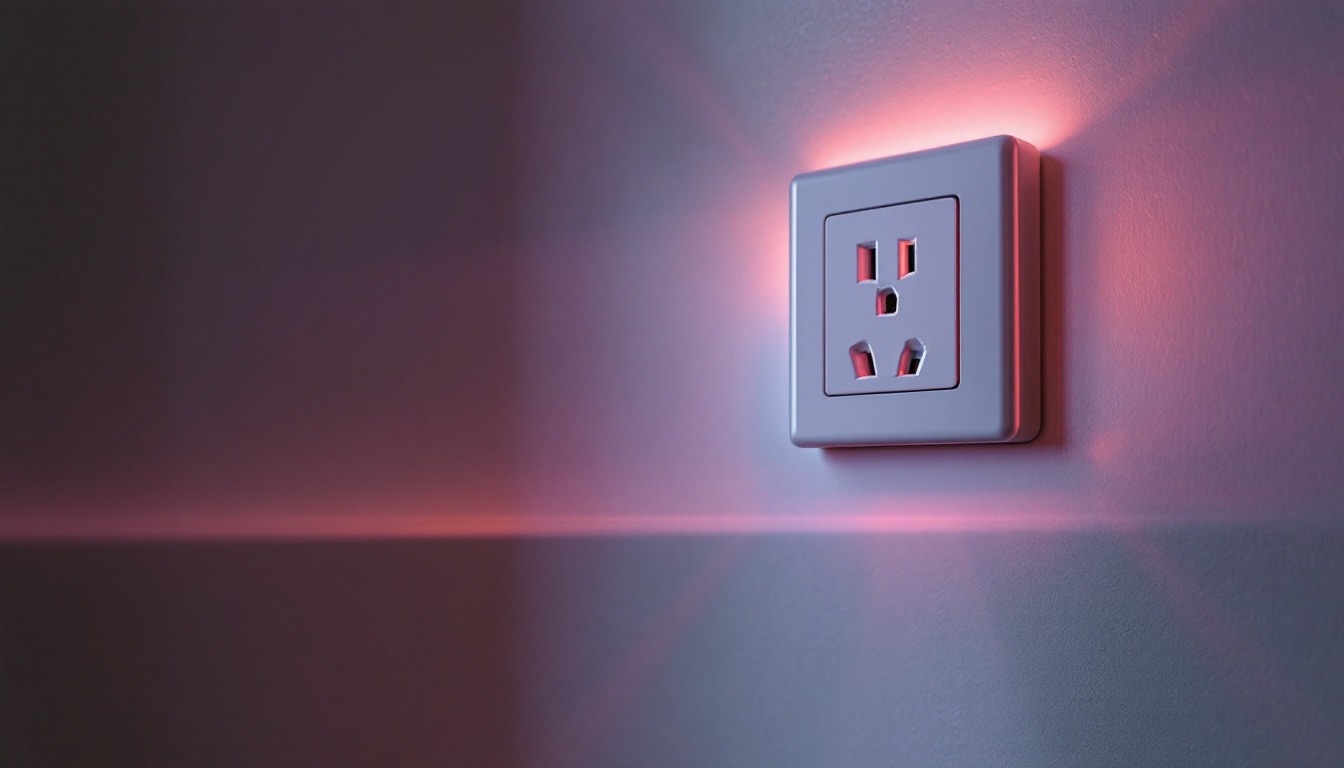
Effective lighting design is a critical aspect of any architectural project, influencing not only the aesthetic appeal but also the functionality and safety of a space. Among the various elements of lighting design, stairwells often receive less attention than they deserve. However, the right lighting in stairwells can enhance visibility, improve safety, and create a welcoming atmosphere. This article delves into the secrets of better lighting designs for stairwells, providing insights that lighting contractors can leverage to elevate their projects.
Stairwells serve as vital transition spaces within buildings, connecting different levels and facilitating movement. Proper lighting in these areas is essential for several reasons.
One of the primary functions of stairwell lighting is to ensure safety. Poorly lit stairwells can lead to accidents, especially in commercial and public buildings where foot traffic is high. Adequate illumination helps individuals navigate stairs without fear of tripping or falling. It is crucial to consider the brightness, uniformity, and placement of lighting fixtures to minimize shadows and dark spots.
Beyond functionality, lighting can significantly enhance the aesthetic appeal of a stairwell. Thoughtfully designed lighting can highlight architectural features, create ambiance, and contribute to the overall design theme of a building. By using various lighting techniques, such as accent lighting or wall washes, contractors can transform a mundane stairwell into a visually striking element of the interior.
In today’s environmentally conscious world, energy efficiency is a top priority for many projects. The right lighting design can reduce energy consumption while still providing adequate illumination. Utilizing LED fixtures, motion sensors, and smart lighting controls can help achieve this balance, making stairwell lighting both effective and sustainable.
When designing lighting for stairwells, several factors must be taken into account to ensure a successful outcome. Understanding these considerations can help contractors create effective lighting solutions that meet the needs of their clients.
Determining the appropriate lighting levels is essential for stairwell safety and usability. The Illuminating Engineering Society (IES) provides guidelines on recommended illuminance levels for different types of spaces, including stairwells. Generally, a minimum of 100 lux (approximately 10 foot-candles) is recommended for stairwells, but this can vary based on the specific use and design of the space.
Contractors should also consider the color temperature of the lighting. Warmer temperatures can create a welcoming atmosphere, while cooler temperatures may be more suitable for modern or industrial designs. Balancing these elements can enhance both safety and aesthetics.
The placement and design of lighting fixtures play a crucial role in achieving effective stairwell illumination. Fixtures should be strategically positioned to minimize shadows and ensure even light distribution. Wall-mounted sconces, recessed lighting, and pendant fixtures are popular choices for stairwells, each offering unique benefits.
Additionally, the design of the fixtures themselves should complement the overall architecture of the building. Sleek, modern fixtures may suit contemporary spaces, while more ornate designs may be appropriate for traditional settings. The right choice can enhance the visual appeal of the stairwell while providing necessary illumination.
Implementing advanced control systems can significantly enhance the functionality of stairwell lighting. Motion sensors, for example, can automatically turn lights on and off based on occupancy, ensuring that the space is only illuminated when needed. This not only improves energy efficiency but also extends the lifespan of the lighting fixtures.
Smart lighting controls can also allow for customizable settings, enabling users to adjust brightness levels or color temperatures based on preferences or specific events. Such flexibility can enhance the user experience and contribute to a more dynamic lighting environment.
There are various lighting techniques that contractors can employ to create effective stairwell designs. Each technique offers unique benefits and can be tailored to fit the specific needs of a project.
Ambient lighting provides the general illumination necessary for visibility in stairwells. This can be achieved through ceiling-mounted fixtures, wall sconces, or even natural light sources such as windows. The goal is to create a well-lit environment that allows individuals to navigate the space safely.
Incorporating dimmable fixtures can enhance the functionality of ambient lighting, allowing for adjustments based on the time of day or activity level. This flexibility can contribute to a more comfortable atmosphere, particularly in residential settings.
Accent lighting can be used to highlight architectural features or artwork within a stairwell. This technique adds visual interest and can create a focal point that draws the eye. For instance, wall-mounted spotlights can illuminate artwork or decorative elements, while uplighting can enhance the texture of walls or ceilings.
When using accent lighting, it is essential to ensure that the intensity of the accent lights does not overpower the ambient lighting. A balanced approach will create a harmonious environment that is both functional and visually appealing.
In some cases, task lighting may be necessary to provide additional illumination for specific activities within the stairwell. For example, if the stairwell is used for reading or as a small study area, dedicated task lighting can enhance usability. This could include adjustable wall-mounted fixtures or integrated lighting in handrails.
Task lighting should be designed to complement the overall lighting scheme while providing the necessary brightness for specific tasks. This ensures that the stairwell remains a safe and functional space.
While designing effective stairwell lighting can yield numerous benefits, several challenges may arise during the process. Understanding these challenges can help contractors develop solutions that enhance their designs.
The height and scale of a stairwell can pose unique challenges for lighting design. High ceilings may require specialized fixtures to ensure adequate illumination, while narrow stairwells may limit fixture placement options. Contractors must carefully assess the dimensions of the space and select fixtures that provide sufficient light without overwhelming the area.
In some cases, using multiple layers of lighting can help overcome these challenges. Combining ambient, accent, and task lighting can create a well-balanced design that addresses the specific needs of the stairwell.
Maintenance is another critical aspect of stairwell lighting design. Fixtures that are difficult to access or require frequent bulb replacements can lead to increased maintenance costs and downtime. Selecting durable, long-lasting fixtures can minimize these concerns, while also ensuring that the stairwell remains well-lit over time.
In addition, considering the placement of fixtures can facilitate easier maintenance. For example, fixtures that are mounted at accessible heights can simplify bulb changes and cleaning, ensuring that the lighting remains effective and visually appealing.
Compliance with local building codes and regulations is essential in any lighting design project. Stairwell lighting must meet specific requirements related to safety, accessibility, and energy efficiency. Familiarity with these regulations can help contractors avoid potential issues during the design and installation process.
Working closely with architects and engineers can ensure that all aspects of the project align with regulatory standards. This collaboration can lead to a more cohesive design that meets both aesthetic and functional requirements.
The field of lighting design is constantly evolving, with new technologies and trends emerging regularly. Staying informed about these developments can help contractors create innovative and effective stairwell lighting solutions.
Smart lighting technology is becoming increasingly popular in various applications, including stairwells. This technology allows for greater control over lighting systems, enabling users to customize settings based on their preferences or needs. Features such as remote control, scheduling, and integration with home automation systems can enhance the user experience.
As smart lighting technology continues to advance, it is likely that more contractors will incorporate these systems into their designs. This trend will not only improve functionality but also contribute to energy efficiency and sustainability.
Biophilic design emphasizes the connection between people and nature, incorporating natural elements into built environments. In stairwell lighting, this can be achieved through the use of natural materials, organic shapes, and lighting that mimics natural daylight.
Integrating biophilic design principles can create a more inviting and calming atmosphere within stairwells. This approach can enhance the overall user experience, promoting well-being and comfort.
Dynamic lighting solutions, which adjust based on environmental conditions or user activity, are gaining traction in lighting design. For stairwells, this could mean lighting that changes color temperature or intensity based on the time of day or occupancy levels.
Implementing dynamic lighting can enhance the functionality of stairwells, providing the appropriate illumination for various situations while also contributing to energy savings. As technology continues to advance, these solutions will likely become more accessible and widely adopted.
Stairwell lighting is a crucial yet often overlooked aspect of lighting design. By understanding the importance of effective lighting, key considerations, and innovative techniques, lighting contractors can create designs that enhance safety, aesthetics, and functionality. As trends continue to evolve, staying informed and adaptable will be essential for delivering exceptional lighting solutions that meet the needs of clients and users alike.
Incorporating the secrets to better lighting designs in stairwells can lead to transformative results, ensuring that these essential spaces are not only safe and functional but also visually appealing and inviting. With thoughtful planning and execution, stairwell lighting can become a standout feature in any architectural project.
Ready to elevate your stairwell lighting designs with the best products on the market? At LumenWholesale, we provide lighting contractors with the tools to create stunning, safe, and efficient lighting solutions. Our spec-grade lighting products are designed to meet your project’s needs, offering the highest quality at wholesale prices. Say goodbye to local distributor markups and hello to a vast selection of lighting options with the convenience of free shipping. Don’t compromise on quality or value; choose LumenWholesale for your next project and experience the ideal combination of excellence and affordability. Wholesale Lighting at the Best Value is just a click away.

Discover the transformative impact of LED outdoor lighting for contractors.

Discover how duplex receptacle outlets can transform your lighting solutions.
Discover the key insights lighting contractors need to meet client expectations for stairway lighting projects.

Discover how work flood lights are revolutionizing the lighting industry with their unparalleled brightness, energy efficiency, and versatility.